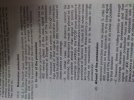These TPWS fitments are most likely to date from the original rollout about 20 years ago. At the time, the loop positioning was dictated by a fairly simple set of tables, and was (from memory) based on 12%g in Emergency.
Since that time, a lot of experience has been gained, and the design process refined. It is usual when carrying out alterations, or even renewals, to reassess the effectiveness, and to alter the arrangements if practical to do so, and also to attempt to achieve effectiveness at 9% too.
A couple of instances from my own experience -
TPWS found not to be effective at 9% for a Warning approach (signal in rear released R-Y on approach) to a signal with a 50m Restricted Overlap (ending almost exactly at the conflict point). No issue with the full overlap, which extended past the conflicts. In this instance it was found difficult to position loops to work for both without being overly restrictive, and adding extra loops would have been complex. It was found that the approach release on the outer signal wasn't to current standards, and barely provided any 'incentive' to reduce speed, as the signal cleared with the train a long way back, basically in many cases it would already have been displaying a Y when sighted. The solution was to adjust the time release to bring the train much closer to the Red. This achieved (theoretical) effectiveness at 9%.
Another instance - the OSS loops were positioned a greater distance from the signal than the current calculation standard required. This actually decreased effectiveness as the set speed was higher than the TSS alone could cope with, so the train 'flies under' the OSS, arrives at the TSS with no further retardation, and exceeds the available Safe Overrun Distance. The loops were moved inwards, reducing the set speed and improving the effectiveness at both 12% and 9% (12% stopped before the conflict, 9% got better but couldn't be made to work without more loops).
A current example being looked at has an OSS+ already, but this is so far from the signal that, again, a train can get past it, and still be going too fast for the inner OSS to handle. This is compounded by the presence of a conflict actually within the overlap, ie the extremity of the overlap is foul of a conflicting move the interlocking does not prevent, which is an unusual situation. Calculations indicate that, with the current SOD, three OSS loops would be required to achieve 12% effectiveness (with the outermost loop moved inwards), but even then 9% still fails.


